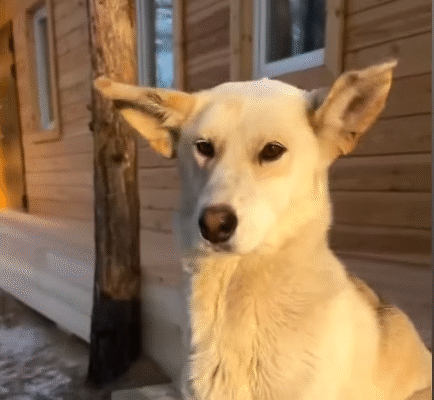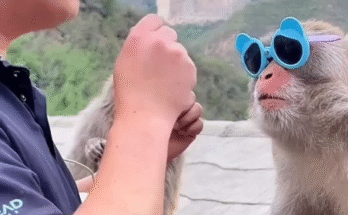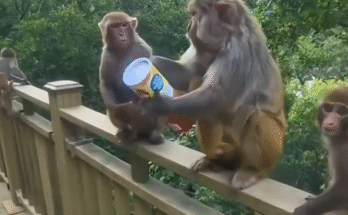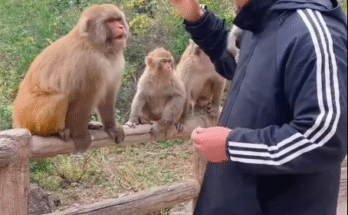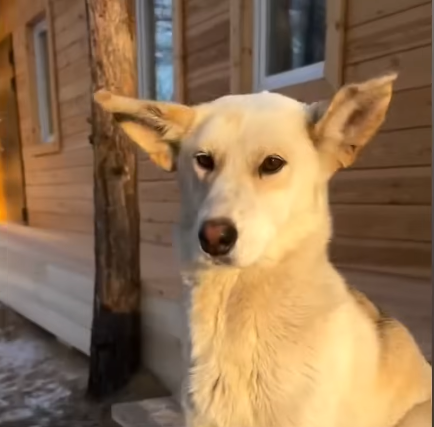
The storm came faster than expected that evening — thick, blinding snow sweeping across the forest road, turning everything white and still. The world felt muffled, swallowed by the soundless hush of winter. My sister Mia and I were driving home from our mountain cabin, our headlights barely cutting through the swirling flakes.
We hadn’t seen another car for miles. The GPS had lost its signal half an hour ago. It was just us, the hum of the engine, and the endless white stretching ahead.
Then, out of nowhere, something dark darted across the road.
I hit the brakes. The truck skidded slightly before stopping.
“What was that?” Mia asked, leaning forward.
“I think… a dog.”
Through the foggy windshield, we could just make out the shape — a medium-sized dog, shivering in the snow, fur clumped with ice. Its eyes gleamed in the light — not wild or frightened, but intent. It stood there, watching us.
Mia opened her door. “Hey, buddy…”
The cold rushed in like a knife, but the dog didn’t move away. Instead, it took a few cautious steps forward, sniffing the air. Then it barked once — sharp, urgent — and turned around, trotting down a narrow path into the trees.
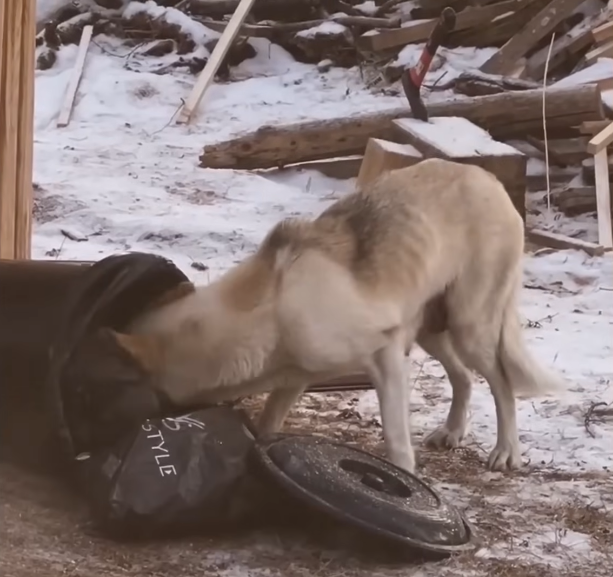
“Wait,” Mia said. “It’s… it wants us to follow.”
I frowned. “It’s just a stray. Probably looking for food or shelter.”
But even as I said it, something about the dog’s behavior felt different. It wasn’t wandering aimlessly — it was leading. It would run ahead, stop, look back at us, and bark again.
Mia gave me that look — the one that said she wasn’t taking no for an answer.
“Come on,” she said. “Let’s follow him. Maybe someone’s hurt.”
I hesitated for a moment, but something inside me — maybe curiosity, maybe instinct — told me to trust her.
So, we followed.
The path was narrow, the snow deep. Our boots crunched through the frozen ground as the dog guided us deeper into the woods. The cold bit through our coats, but adrenaline kept us moving.
Every few steps, the dog would stop and glance back, making sure we were still coming. His fur was thick but tangled, his tail low, his paws leaving faint red marks in the snow. He’d been out here for a while.
“Where are you taking us, boy?” I muttered.
He barked again and bounded forward.
The deeper we went, the quieter it got. The wind softened, the trees muffled the sound of the storm. I began to wonder if we’d made a mistake — if we’d just wandered into a freezing maze following a desperate animal.
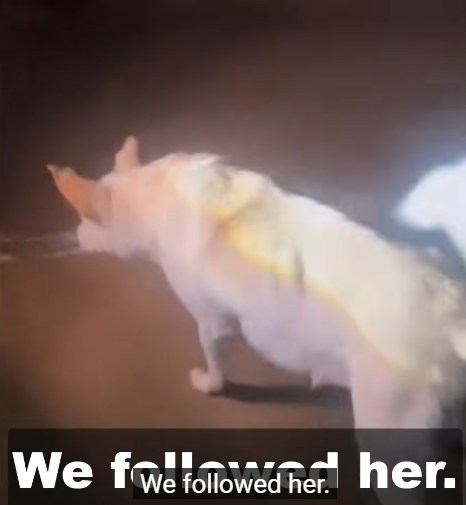
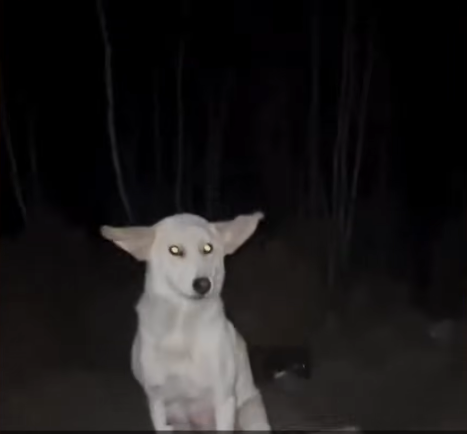
But then Mia stopped.
“Do you hear that?” she whispered.
I held my breath.
Faintly, through the howl of the wind, there was something — a sound that didn’t belong to the forest. A muffled cry.
We started running. The dog raced ahead, barking loudly now, weaving between trees. The sound grew clearer — sobbing, soft but desperate.
And then, through the snow, we saw it: a small, overturned car at the bottom of a ditch, half-buried in white.
“Oh my God,” Mia gasped.
We scrambled down the slope. The front of the car was crushed against a tree. Steam rose from the broken hood. The windows were frosted, but when I wiped one clean, I saw movement inside — a woman, maybe in her late twenties, slumped over the steering wheel.
I shouted, “Ma’am! Can you hear me?”
Her eyes fluttered open, dazed and frightened. She tried to move but was trapped by the seatbelt.
Mia tugged on the back door. It was frozen shut. I climbed onto the side and yanked at the handle until it finally gave way with a crack. The cold air rushed inside.
“We’re here to help!” I said, reaching in. “Are you hurt?”
Her lips were pale. She shook her head weakly. “My… my baby. In the back.”
The words hit like thunder.
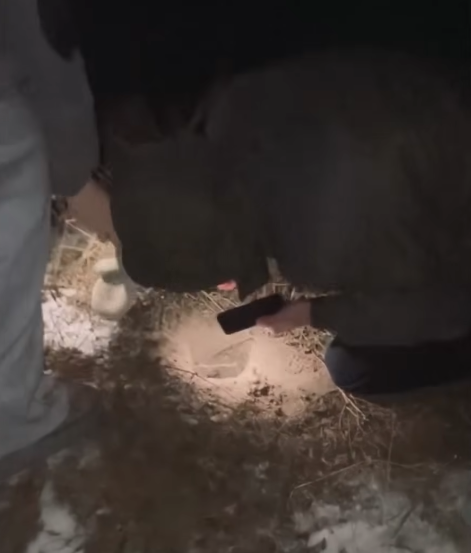
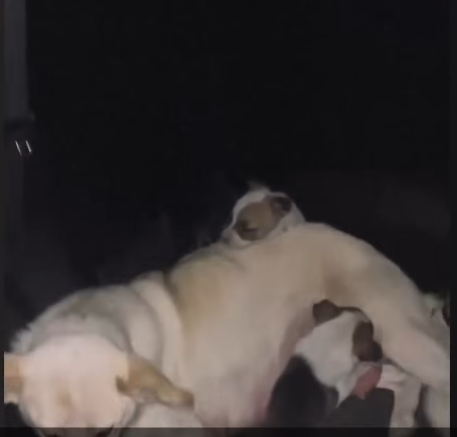
I turned and looked. In the backseat was a small car seat, half-covered by a blanket — and under it, a tiny child, barely two years old, crying softly.
“Hang on,” I said, my voice trembling.
I reached in and gently lifted the child out, wrapping her in my coat. She was cold, but breathing. The relief that flooded through me almost made me dizzy.
Mia stayed by the woman, checking her pulse. “We need to call for help,” she said.
But there was no signal. The phones were dead.
The only one who didn’t panic was the dog. He sat beside the car, tail flicking, watching over us — calm, patient, as if he’d already done this before.
We couldn’t stay there; the temperature was dropping fast. The woman’s face was turning blue.
I looked at the dog. “You brought us here,” I said. “Can you take us back?”
He barked once, stood up, and began walking back toward the trees.
“Follow him,” I told Mia. “He knows the way.”
She nodded, clutching the baby close as we half-carried, half-supported the woman. It was slow, grueling work through the snow, but the dog never let us out of sight. He’d run ahead, stop, bark, and wait.
Every few minutes, he’d circle back to check on us, nudging the woman’s leg with his nose before continuing.
When we finally saw the glow of our truck’s headlights through the trees, I nearly cried.
We got the woman and her child into the truck, wrapped them in blankets, and turned up the heat. The baby stopped crying, curling against her mother’s chest.
By some miracle, the engine started right away.
We drove back toward town, the dog running beside us for a while before stopping at the edge of the forest, snow swirling around him like mist.
I rolled down the window. “Come on, boy! Get in!”
He just stood there, tail wagging slowly, eyes reflecting the headlights. Then, as if satisfied that his mission was complete, he turned and disappeared into the white.
At the hospital, doctors said the woman — her name was Anna — and her daughter would be fine. She’d been stranded for nearly eight hours after sliding off the road. She’d lost consciousness at some point, but the car’s heater had kept them alive just long enough.
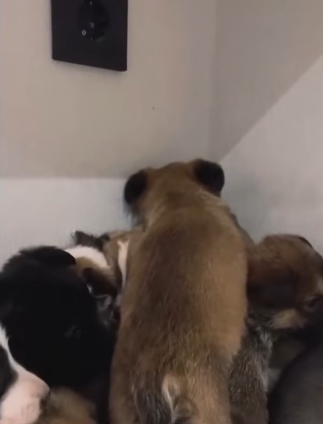
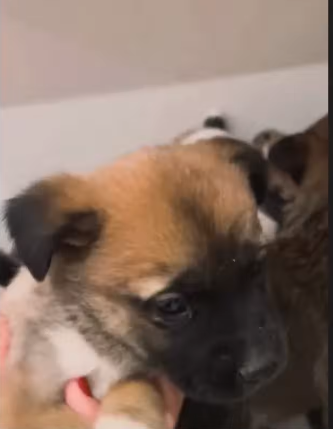
When she woke fully, she asked, “Who… who found me?”
I told her about the dog.
At first, she didn’t say anything. Then, tears filled her eyes.
“Was he brown? Medium-sized? White patch on his chest?”
“Yeah,” I said. “That’s him.”
She smiled through the tears. “That’s Max. My dog. He was in the car with us when we crashed. I thought he’d died.”
I stared at her. “He saved you.”
She nodded slowly. “He must have gone for help.”
A few days later, the snow melted enough for the rescue team to return to the crash site. They searched the woods, calling for Max, but found no sign of him. It was as if he’d vanished.
Anna insisted he’d come back one day. She said dogs like Max don’t just disappear — they watch from a distance, waiting until they know their family is safe.
Weeks passed, and then one morning, I got a call from Anna.
“He came back,” she said, crying. “He’s home.”
Max had been found sitting on her porch, thin but alive, tail wagging weakly.
When we visited, he recognized us instantly, bounding over with bright eyes and a soft whine. Anna knelt beside him, burying her face in his fur.
“He led you through the snow,” she whispered. “He led you back to me.”
Sometimes, when I think back to that night, I can still see the shape of him disappearing into the storm — a dark blur against endless white, a silent guardian watching over the people he loved.
We thought we were rescuing a dog that night. But the truth was, he was rescuing them.
And in some way, he rescued us too — reminded us of loyalty, courage, and the kind of love that doesn’t need words to be understood.
Because when a heart is pure, even through the coldest snow, it finds a way to say:
“Follow me.”
